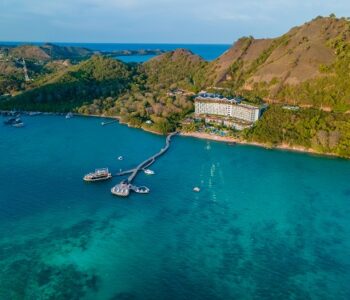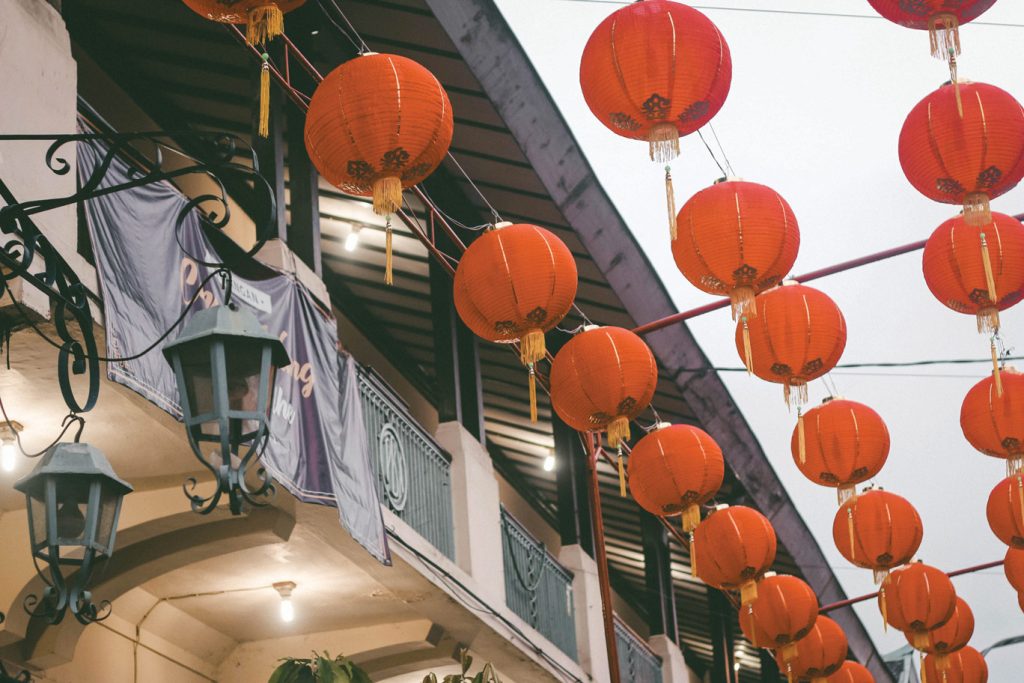
What is Imlek?
This auspicious day, locally known as ‘Imlek’, is enthusiastically celebrated by the majority of the ethnic Chinese community across Indonesia, with festivities spanning from vibrant decorations and culinary delights to cultural traditions. These celebrations draw people from diverse backgrounds, creating an atmosphere of joy and unity.
In Jakarta, the jubilation extends to several locations, continuing until the 15th night, known as Cap Go Meh, after the commencement of the CNY celebration. Beyond the fact that it is a national holiday, these destinations offer an opportunity for people to usher in the new year while observing the traditional festivities. Additionally, 2024 marks the Year of the Wooden Dragon in the Chinese zodiac, symbolising strength, nobility, honour, luck, and success. Here in Jakarta, one will find certain destinations and areas that come alive during Imlek, or Chinese New Year; where traditions and ceremonies are showcased for all to see.
Kim Tek Le Temple
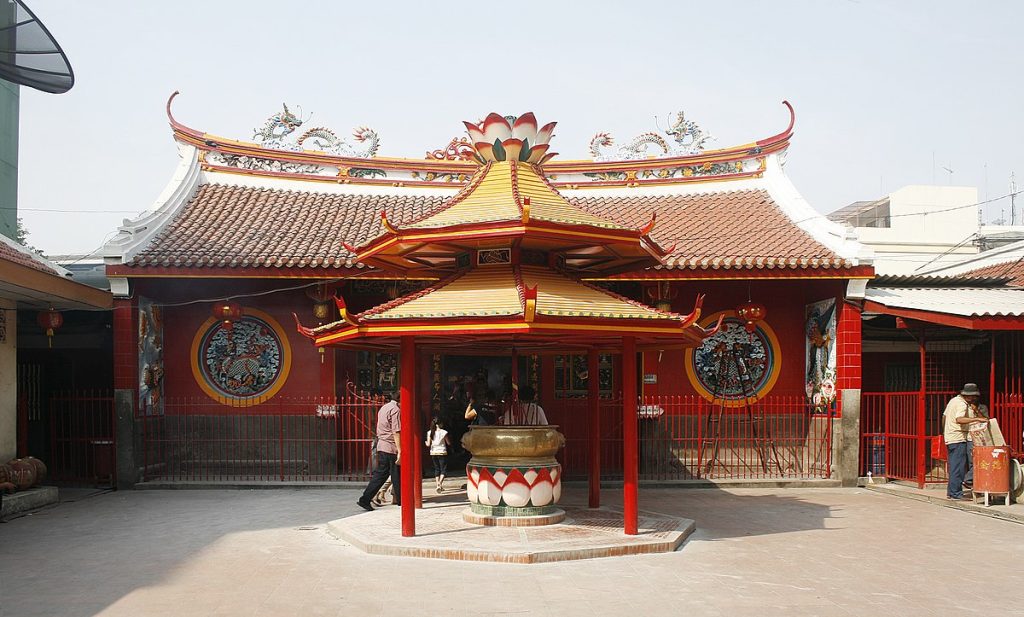
Also referred to as Vihara Dharma Bhakti, Kim Tek Le Temple stands as Jakarta’s oldest temple, constructed in 1650 by Lieutenant Kwee Hoen. For centuries, this Chinese temple – referred to as klenteng in indonesia – has been the focal point for Chinese holiday celebrations, including CNY.
Morning visits to the temple reveal a captivating scene of Confucian devotees arriving and engaging in solemn prayers. The air is filled with the fragrance of incense from the red candles on-site, while worshippers make respectful nodding gestures. Notably, both the Chinese and local communities converge, contributing to the lively atmosphere. The temple opens its doors daily from 6 am to 4 pm, located at Jalan Kemenangan III, Petak Sembilan No. 19, Taman Sari, West Jakarta.
Looking for other places to eat or stay this Chinese New Year?
Check out our Best Places to Celebrate Chinese New Year in Jakarta guide here.
Petak Sembilan Glodok
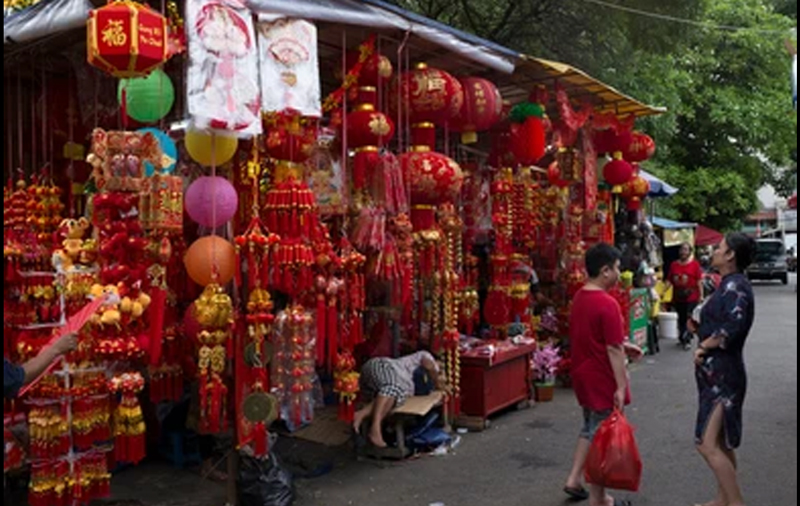
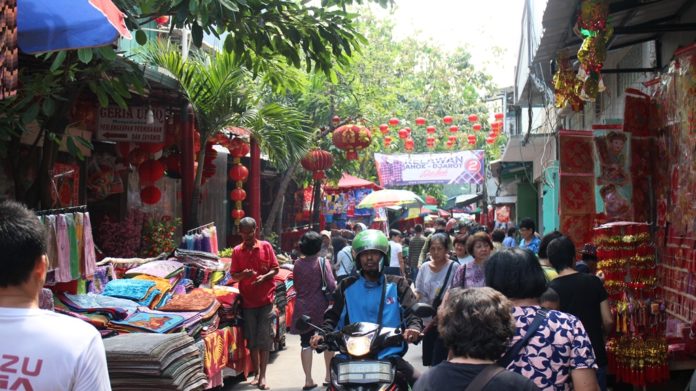
A must-visit destination for experiencing the full spectrum of Imlek festivities in Jakarta is the Petak Sembilan area in Glodok. This traditional market transforms into a visual spectacle, adorned with flaming red lanterns, red packets, Mandarin orange trees, upside-down Fu characters, firecrackers, and intricate paper cuttings.
The market serves as the epicentre for all things related to CNY celebrations, offering decorations, cakes, sweets, and specialty snacks. Post-shopping, visitors often take respite at renowned stalls like Tak Kie Coffee, Bakmi Amoy, Rujak Shanghai Encim, Cingcongfan Pak Karim, and more. Find this vibrant market on Jalan Kemenangan Raya, Glodok, West Jakarta.
Krendang
While Singkawang in West Kalimantan is renowned for its Tatung parade, considered one of Southeast Asia’s most significant cultural events, Jakarta residents need not travel far. In Krendang, an area densely populated by migrants from West Kalimantan, including Singkawang, Tatung attractions reminiscent of the origin are featured.
Although fewer in number than Singkawang’s parade, the festival of extreme attractions takes place during Cap Go Meh celebrations. The Tatung parade in Krendang is typically centred around the Dewi Yasodhara temple, located at Jalan Krendang Raya, Tambora, West Jakarta.
Pantjoran PIK

Pantjoran Pantai Indah Kapuk has emerged as a favoured destination during Imlek/CNY celebrations, promising visitors an array of spectacular events and family-friendly attractions. Inspired by the architecture of Zhangzhou in Fujian province, China, this area invites visitors to partake in various activities, such as character walks, karaoke, traditional dances, costume photos, fortune-telling sessions, and the captivating Barongsai performances. Designed as a one-stop entertainment hub, Pantjoran PIK, located at Golf Island, Kapuk Muara, North Jakarta, also offers a lively culinary scene, enhancing the overall festive experience.
Taman Budaya Tionghoa

For those interested in delving into Chinese culture during the Imlek holiday, Taman Budaya Tionghoa, located in Taman Mini Indonesia Indah, provides an ideal setting. This park serves as a cultural haven, allowing visitors to explore the history, traditions, and facets of the Chinese community in Indonesia through its curated artifacts, photographs, documentations, and architectural displays.
The park complex encompasses a small Chinese village (Pecinan) replete with trinkets, the Sampek Eng Tay stone bridge, and three museums: the Chinese Peranakan Museum (Cheng Ho Museum), Indonesian Hakka Museum, and Indonesian Hakka Yodding Museum. Visit Taman Mini Indonesia Indah, situated on Jalan Raya Taman Mini, Cipayung, East Jakarta, for a rich cultural experience.





